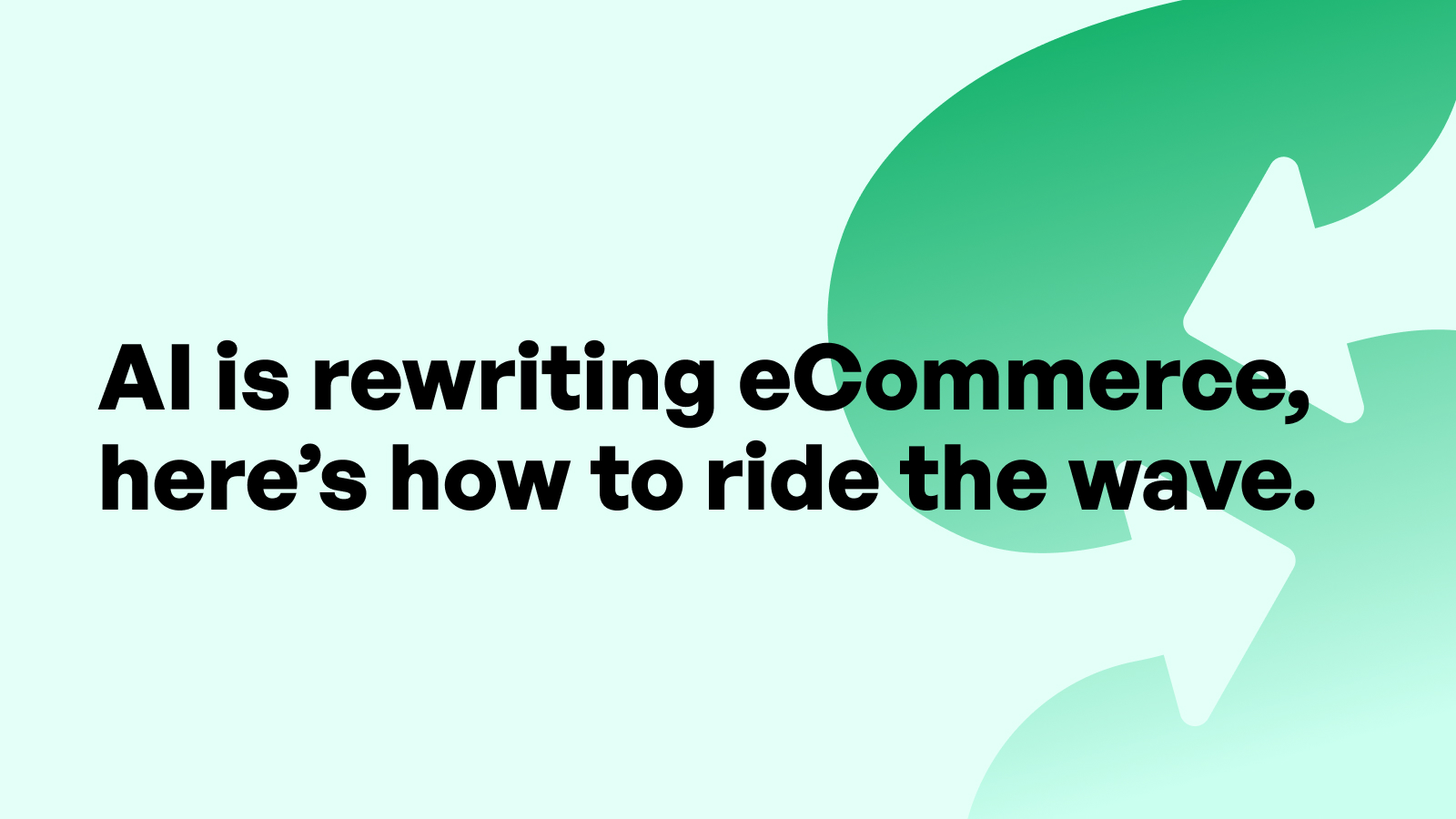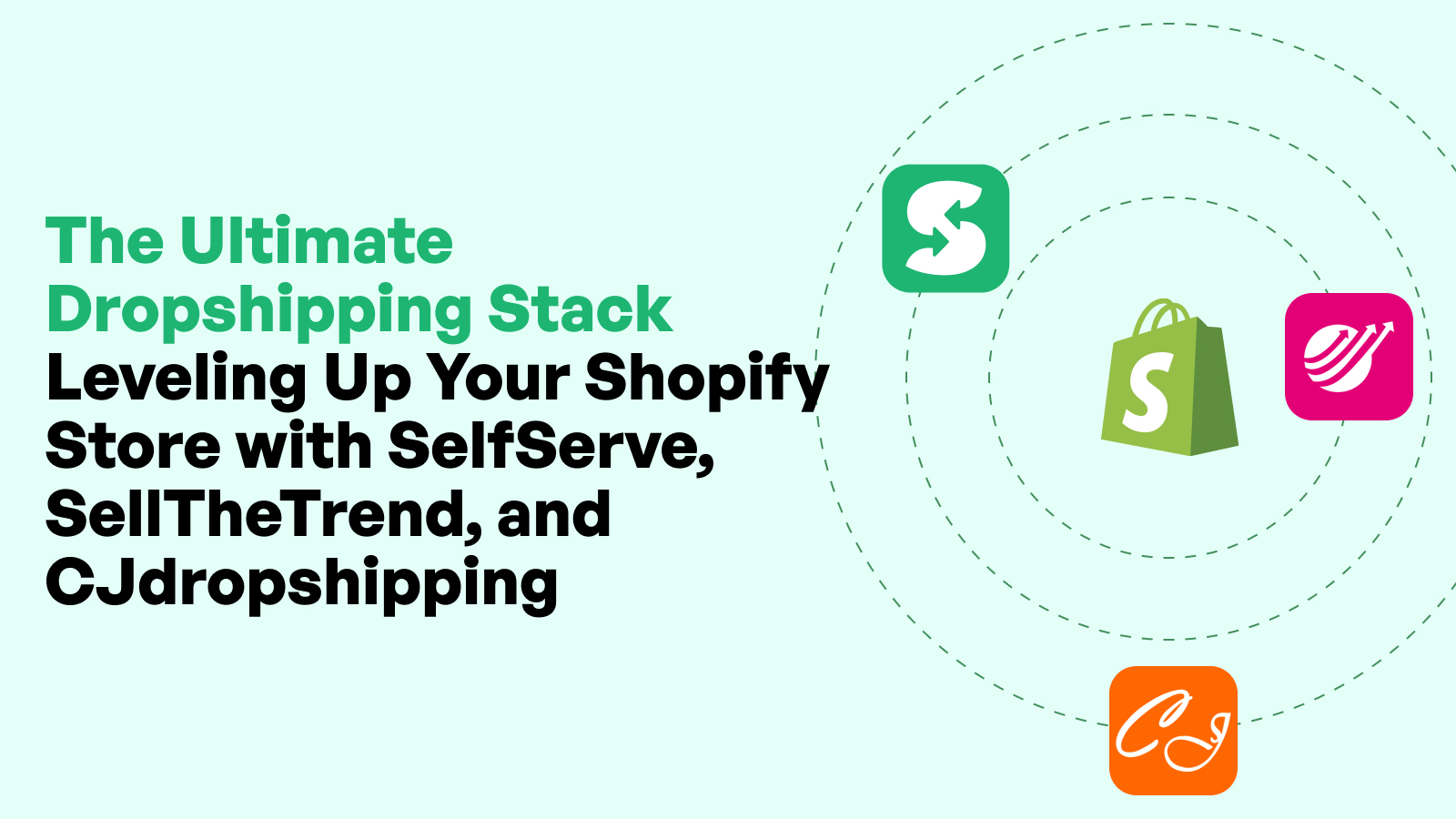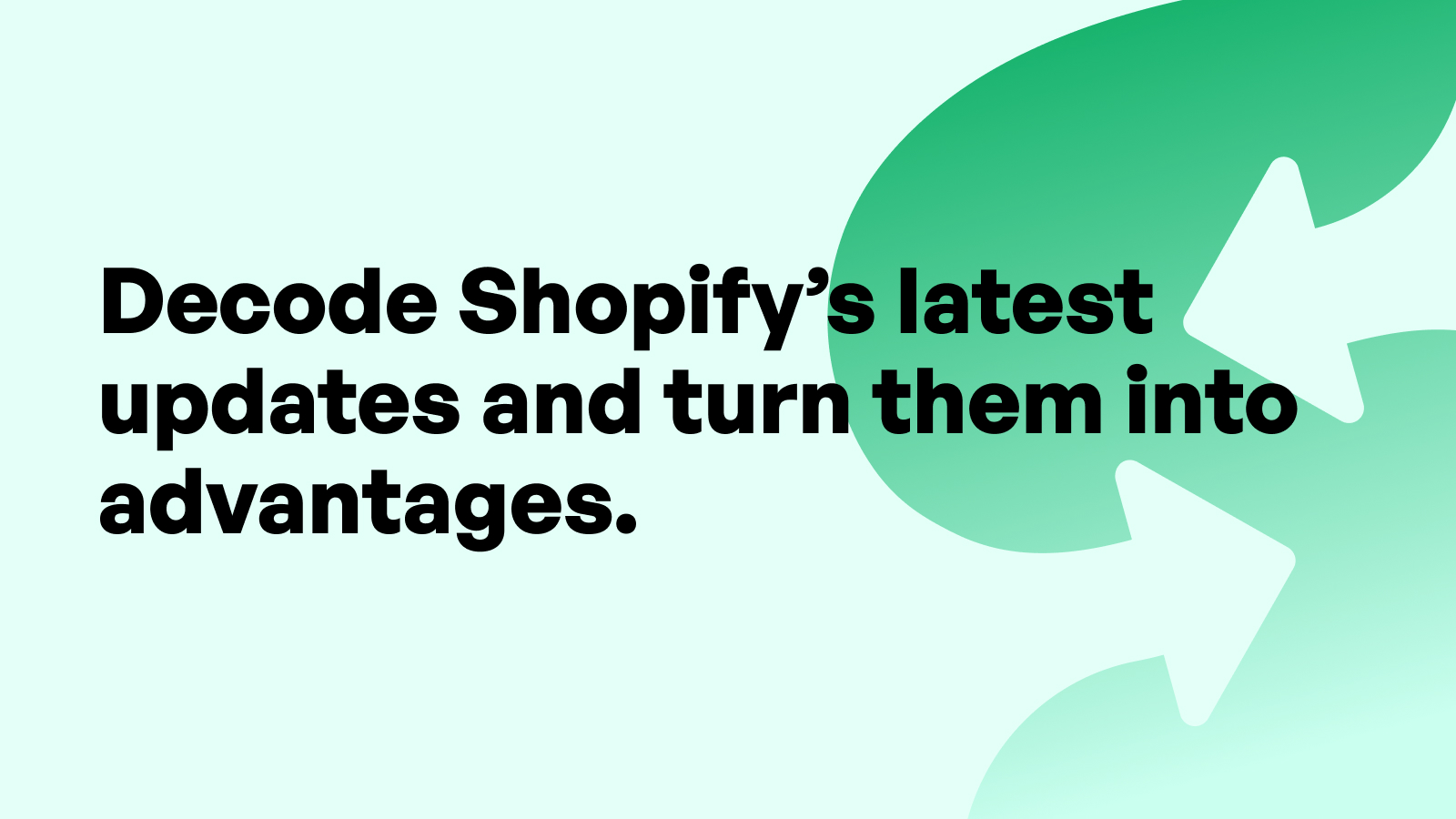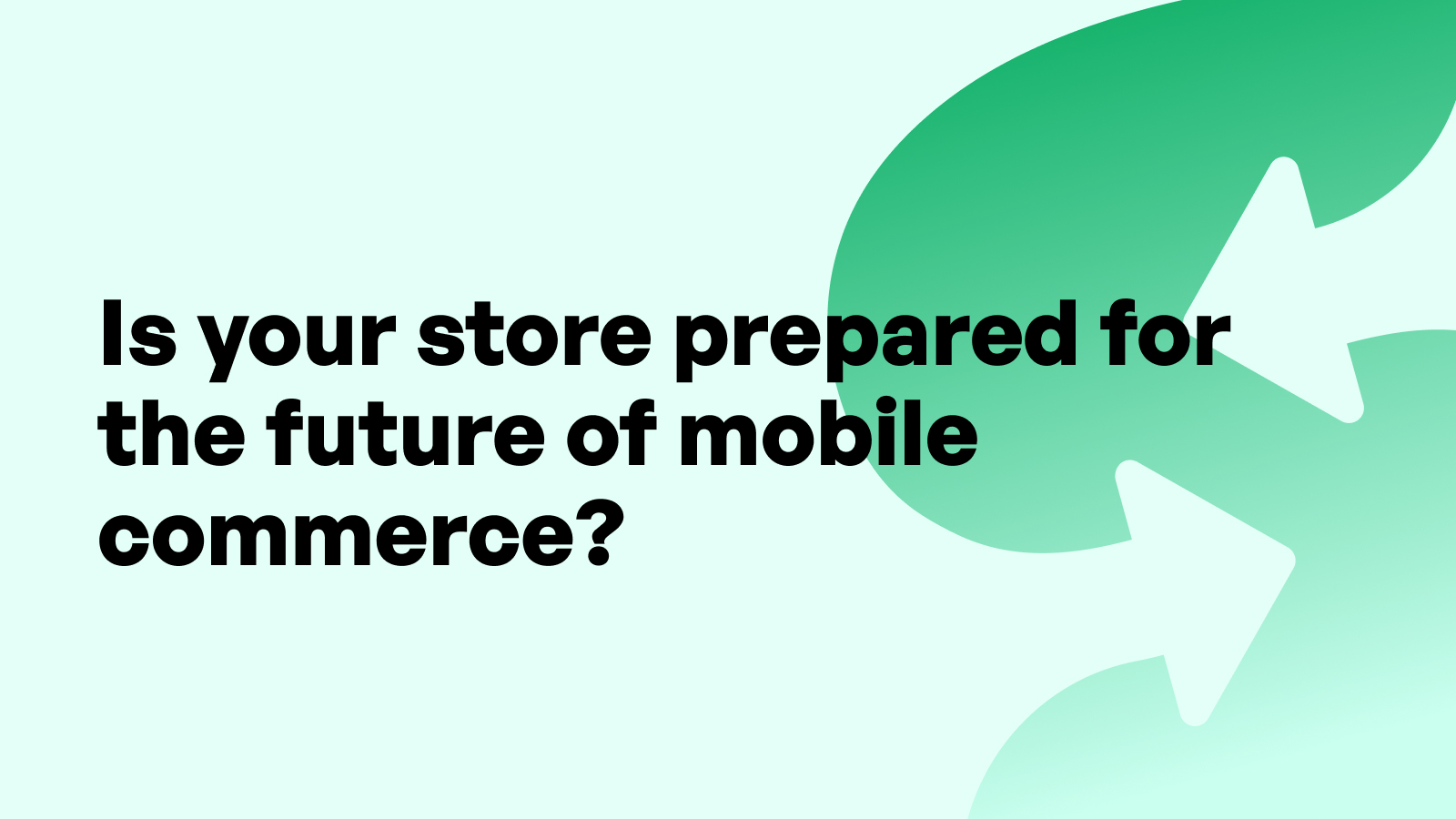The Rise of AI in eCommerce: What Shopify Store Owners Should Know

AI is no longer a futuristic concept reserved for large tech enterprises. It has quickly evolved into a set of practical tools that even small to midsize businesses — including Shopify merchants — can leverage to scale, automate, and personalize their eCommerce operations. In 2025, artificial intelligence is playing a pivotal role across every customer touchpoint, from product discovery and personalized marketing to fraud detection and logistics.
Shopify merchants, in particular, are uniquely positioned to benefit from AI innovations thanks to the platform’s robust app ecosystem, seamless integrations, and increasing support for machine-learning-based tools. Whether you're a one-product brand or a multi-national DTC business, the ability to implement AI at strategic levels is no longer optional — it's a competitive necessity. As consumer expectations for personalization, speed, and transparency rise, AI can deliver intelligent insights and automated workflows that improve conversion rates, optimize backend processes, and elevate the customer experience.
This guide explores the latest applications of AI in eCommerce and offers Shopify-specific strategies to help you future-proof your store and thrive in an AI-first marketplace.
Understanding the Core Technologies Behind AI in eCommerce
Machine Learning, Deep Learning, and Predictive Analytics
At the heart of AI's effectiveness in eCommerce are machine learning and deep learning — subsets of artificial intelligence that use algorithms to recognize patterns in data and make decisions based on those insights. Machine learning is frequently used to analyze customer behavior, optimize pricing, and recommend products, while deep learning goes a step further, enabling systems to understand unstructured data like images, text, and voice.
For Shopify merchants, predictive analytics powered by machine learning can anticipate future trends based on past behavior. For example, analyzing the purchase patterns of returning customers allows for highly targeted upsell campaigns. Merchants can also forecast demand to avoid overstocking or understocking, thus improving cash flow and warehouse efficiency.
Tools like Shopify’s analytics dashboard, enhanced with machine learning integrations or third-party AI engines, allow merchants to predict customer lifetime value, churn risk, and seasonal demand shifts. These insights transform reactive decision-making into proactive planning, giving merchants a clear edge in a saturated marketplace.
Natural Language Processing and Computer Vision
Natural Language Processing (NLP) enables machines to understand and interact using human language. This is particularly useful for chatbots, product search, sentiment analysis, and review filtering on Shopify. For example, AI-driven search tools can interpret customer intent from vague queries like “cozy sweater” and surface products tagged with synonyms like “soft,” “knit,” or “winter wear.”
Computer vision, another AI application, enables image-based product discovery. Shopify merchants using apps with built-in computer vision can allow shoppers to upload images and receive visually similar product recommendations. This technology enhances the shopping experience, particularly in fashion, home decor, and lifestyle categories where visual aesthetics matter greatly.
Combined, NLP and computer vision power immersive and intuitive shopping experiences that feel almost human. These tools reduce friction in the buyer journey and guide customers to the right product faster, ultimately increasing conversion rates.
The Role of Data: First-Party, Behavioral, and Real-Time Streams
AI is only as effective as the data it learns from. In 2025, Shopify merchants must focus on gathering and leveraging first-party data — information collected directly from customer interactions. With increasing restrictions on third-party cookies and data privacy laws like GDPR and CPRA, first-party data is becoming a critical asset.
Behavioral data, such as time spent on product pages, click-through rates, and add-to-cart actions, allows AI systems to fine-tune personalization. Real-time data streams — like live browsing behavior and location — empower Shopify merchants to deliver dynamic content, promotions, or shipping options based on where a customer is and what they’re doing at that exact moment.
Shopify’s integration with CDPs (Customer Data Platforms) and AI-powered analytics apps like Segments.ai or Lexer help merchants centralize and activate this data. This ensures AI-powered strategies are not just smart — they’re contextually aware and legally compliant.
AI-Powered Product Discovery and Recommendations
Personalized Product Feeds Based on Behavior
Today’s shoppers expect more than generic product listings. They want curated, personalized experiences — and AI makes that possible. Using behavioral and transactional data, AI can dynamically rearrange product feeds based on what an individual customer is likely to want.
For example, a returning customer who frequently buys eco-friendly beauty products may see a homepage filled with sustainable skincare options. Shopify merchants can leverage AI-powered tools like LimeSpot, Nosto, or Rebuy to implement dynamic personalization that reflects user intent.
These smart product feeds not only improve user satisfaction but also significantly increase average order value and conversion rates. Because they adapt in real-time, they serve relevant products whether the user is browsing via mobile, desktop, or app.
This level of intelligent merchandising — where content changes based on past behavior, purchase frequency, or even time of day — is what sets high-performing Shopify stores apart in 2025.
Visual Search and Image Recognition Tools
The visual nature of online shopping has given rise to tools that allow customers to search using images rather than text. AI-powered visual search helps users upload photos of a product they like — such as a handbag spotted on Instagram — and discover similar items in a Shopify merchant’s store.
This functionality is particularly impactful for fashion and lifestyle brands. By integrating apps like Syte or ViSenze, Shopify merchants can reduce bounce rates from frustrated shoppers who can't articulate what they want in words.
Visual search is also a valuable accessibility tool, enabling inclusive discovery for customers who are more comfortable navigating visually than textually. As online visuals become more central to discovery, image-based search will only grow in relevance.
AI-Driven Search Bars and Smart Autocomplete
Traditional keyword-based search bars are giving way to AI-enhanced alternatives that understand customer intent. These smart search tools use NLP and machine learning to interpret fuzzy or conversational queries and suggest relevant products in real-time.
Autocomplete suggestions adapt as customers type, surfacing trending items, frequently searched phrases, and personalized suggestions. Apps like Doofinder or Searchanise bring this functionality to Shopify, helping merchants reduce no-result searches and improve overall engagement.
This improves usability while also exposing customers to a wider range of SKUs, boosting discovery and increasing cart sizes.
Conversational Commerce: AI Chatbots and Virtual Assistants
24/7 Customer Service with Generative AI Chatbots
The expectations for instant, round-the-clock support are growing, especially as Shopify merchants expand globally. AI chatbots are now capable of handling nuanced customer inquiries in natural language — thanks to advancements in generative AI models like GPT.
These bots are no longer limited to FAQs. They can assist with product recommendations, track orders, process returns, and even collect zero-party data through conversational flows. Shopify merchants benefit from platforms like Tidio, Heyday, and Gobot, which integrate directly with the Shopify backend and CRM.
This automation significantly reduces support costs, improves response time, and frees up human agents to focus on complex issues. Most importantly, it ensures that customers receive consistent, branded interactions any time of day or night.
Human Handoff, Sentiment Analysis, and Escalation Protocols
While AI chatbots are efficient, not every situation can be resolved with automation. That’s why smart implementations include seamless handoff features — transferring conversations to human agents when sentiment analysis detects frustration or confusion.
Sentiment analysis tools use natural language understanding to read emotional tone, helping Shopify merchants identify unhappy customers early. This enables better service recovery and protects customer satisfaction scores.
Integrated escalation workflows ensure that when human intervention is required, it's timely, context-rich, and frictionless. Tools like Shopify Inbox or Gorgias, paired with AI layers, allow this hybrid support model to work effectively.
Integration with Shopify Inbox and Meta Messenger
Omnichannel communication is key in 2025. Customers expect to reach brands through Instagram, Facebook Messenger, and even SMS. Shopify merchants can use AI-enabled chat tools to unify conversations across these platforms while maintaining context.
Shopify Inbox, when paired with AI plugins, becomes a centralized hub for managing all customer conversations. Chat history, preferences, and previous order data can be recalled instantly to deliver personalized support and tailored recommendations.
AI doesn't just automate responses — it orchestrates intelligent conversations that reflect the unique context of every customer.
Dynamic Pricing and Inventory Optimization
Real-Time Price Adjustments Based on Demand and Competition
Pricing is no longer static. In 2025, Shopify merchants are using AI to implement dynamic pricing models that respond to shifts in demand, competitor pricing, and even weather or local events.
AI tools monitor market signals and adjust prices to maximize revenue and margin without constant manual input. For example, an apparel merchant may increase prices slightly during a heatwave for summer items — or offer targeted discounts during off-peak hours to drive conversions.
Apps like Prisync and Intelligence Node offer Shopify integrations that let merchants deploy real-time pricing strategies without overcomplicating operations.
Dynamic pricing also helps merchants run smarter sales and flash promotions. By testing elasticity and analyzing buyer behavior, merchants can identify the optimal pricing points for different segments.
Forecasting Demand to Prevent Stockouts and Overstock
Stockouts lead to missed revenue. Overstock ties up capital. AI solves both problems through predictive inventory analytics. Shopify merchants using AI tools like Inventory Planner or Cogsy can forecast demand based on seasonality, historical data, and campaign projections.
These insights inform smarter purchasing, replenishment schedules, and bundle creation. For instance, AI can signal a need to reorder a best-selling item two weeks earlier than usual based on social media buzz or email campaign triggers.
Accurate demand forecasting ensures customer expectations are met while maintaining lean inventory practices that improve cash flow.
Managing Bundles, Subscriptions, and Limited-Time Offers
AI is not just for managing SKUs — it's a strategic assistant for merchandising. Shopify merchants can use AI to identify which products are frequently bought together and automatically generate bundles that increase AOV.
For stores offering subscriptions, AI can optimize reorder intervals, recommend upsells at renewal points, and reduce churn by tracking early warning signals like skipped deliveries.
Flash sales and limited-time offers are also driven by AI insights, helping merchants target the right products at the right time to the right audience. Shopify apps like Bold Bundles and Recharge now include AI features that take guesswork out of product packaging and pricing strategy.
AI in Checkout Optimization and Conversion Funnels
Smart Upsells, Cross-Sells, and Exit Intent Prompts
Checkout is where intentions become revenue. In 2025, AI plays a crucial role in personalizing the final stages of the customer journey. Shopify merchants are using AI tools to insert smart upsell and cross-sell offers at checkout and post-purchase screens.
For instance, an AI engine may detect that a customer buying a travel bag is also likely to need a waterproof pouch — and surfaces it with a one-click add-on. Exit intent technology tracks cursor movement and browsing time, launching custom offers when it detects abandonment patterns.
These real-time interventions improve conversion rates and average order value without disrupting the user experience.
Personalizing Checkout Flow Based on Device or Region
Localization and responsiveness are critical at checkout. AI detects whether the shopper is on mobile, desktop, or tablet — and adapts the checkout experience accordingly. For example, mobile checkouts may display fewer fields or larger buttons for thumb-friendly navigation.
Shopify merchants can also personalize by region. AI recommends preferred payment methods (like Klarna in the Nordics or Paytm in India), displays appropriate shipping windows, and applies local currency dynamically.
AI ensures that every customer receives a checkout experience optimized for their context, which dramatically reduces friction and drop-off.
Cart Abandonment Prediction and Automated Retargeting
AI doesn’t just act at checkout — it anticipates dropout before it happens. By analyzing behavioral cues such as scroll depth, time-on-page, or device-switching, AI systems predict which customers are most likely to abandon cart.
Automated retargeting flows — via email, SMS, or push notifications — are triggered instantly. These messages can include personalized incentives like 10% off or low-stock warnings based on AI interpretation of urgency signals.
Shopify merchants using Klaviyo, Omnisend, or Postscript benefit from AI features that make retargeting smarter and more responsive. By re-engaging abandoners at precisely the right moment, merchants can recover otherwise lost revenue.
Mentioning the Self Serve Shopify App
A critical yet often overlooked part of checkout optimization is post-purchase self-service. Shopify merchants who empower customers to manage their own returns, exchanges, and order updates see increased loyalty and reduced support costs.
The Self Serve Shopify App fits perfectly into this AI-driven customer experience. By giving shoppers a dedicated portal to self-manage their orders, this app reduces dependency on customer support while maintaining high satisfaction. It integrates seamlessly with your Shopify store, creating an intuitive, branded interface that turns support into a strength.
This level of automation is essential in 2025, where scalability, convenience, and personalized service define long-term eCommerce success.
Enhancing Marketing Automation with AI
Predictive Email Marketing and Customer Journey Mapping
AI is revolutionizing how Shopify merchants approach email marketing. Predictive models analyze user behavior, purchase history, and engagement patterns to determine the best times, content types, and channels to reach each customer. With tools like Klaviyo and Omnisend, merchants can automate hyper-personalized sequences that reflect individual buying stages.
For example, a customer who frequently browses but rarely buys might be placed in a re-engagement funnel with AI-curated content and offers. Another who always opens emails on Friday mornings would receive time-optimized sends. These dynamic flows are more efficient and effective than traditional batch-and-blast campaigns.
AI-generated insights also map out entire customer journeys — from discovery to retention — allowing merchants to fill gaps, eliminate friction, and build lifetime value.
AI-Generated Ad Copy, Subject Lines, and Product Descriptions
Creativity used to be the bottleneck in marketing, but AI is changing that. Tools like Jasper, Copy.ai, and Shopify-integrated plugins now generate email subject lines, ad copy, and even product descriptions in seconds — tailored to different audience segments.
Shopify merchants can A/B test AI-written content at scale, continuously improving CTRs and engagement rates. These tools learn from performance data, adapting copy style and structure to reflect what resonates most.
This drastically reduces time spent writing and increases consistency across marketing channels, from Facebook ads to on-site banners.
Audience Segmentation and ROI Forecasting
Segmentation has gone from basic demographics to complex behavioral clusters — thanks to AI. Shopify merchants can now group users by psychographic patterns, purchase likelihood, or interaction frequency using advanced analytics.
AI platforms help forecast campaign ROI before launch by simulating outcomes based on historical performance. This allows merchants to allocate budget more intelligently and avoid costly experiments.
Merchants using tools like Glew.io or Reveal benefit from real-time segment updates, ensuring that no audience becomes outdated or irrelevant.
Fraud Detection, Risk Mitigation, and AI Security Tools
Detecting Fake Orders, Bot Activity, and Suspicious Behavior
Fraud continues to be a major concern for Shopify merchants, especially during high-volume periods like sales events. AI systems can identify irregular patterns — such as orders from flagged IPs, mismatched billing and shipping addresses, or excessive quantity purchases — and trigger alerts or automatic holds.
These fraud prevention measures aren’t reactive; they’re predictive. AI tools assess risk in real time and block problematic transactions before they’re processed.
Shopify merchants often use apps like Signifyd and NoFraud to automate these processes, minimizing chargebacks and protecting profit margins.
Shopify Apps for Payment Fraud Prevention
The Shopify ecosystem includes several AI-enhanced apps that specialize in transaction security. Apps like FraudBlock, Kount, and Sift leverage large data networks to provide real-time fraud scoring.
These apps analyze device fingerprinting, behavioral biometrics, and historical patterns to flag or approve orders. For high-risk transactions, they can automatically trigger multi-factor authentication or additional verification steps.
This layered security approach helps Shopify merchants maintain trust without slowing down legitimate customers.
Using AI to Strengthen Customer Trust and PCI Compliance
Customers care deeply about data security. Shopify merchants can use AI not only to protect transactions but also to enhance transparency. AI tools can provide real-time payment status updates, explain fraud-related actions, and reassure users that their data is safe.
Additionally, Shopify’s infrastructure is PCI-compliant, and many AI apps are built with GDPR and CCPA regulations in mind. Automated systems ensure compliance through secure tokenization, encrypted storage, and real-time monitoring.
This builds trust — a non-negotiable asset in today’s privacy-conscious eCommerce landscape.
AI in Visual Merchandising and Creative Design
Automated Image Editing and Background Removal
High-quality visuals drive conversions, but editing photos at scale is time-consuming. AI tools now automate this process, helping Shopify merchants generate polished images in minutes.
Tools like Pixc, Canva Pro, and Remove.bg can batch-edit product photos, remove backgrounds, add shadows, and enhance lighting automatically. This ensures a consistent visual standard across your store without relying on expensive photography teams.
AI also enables dynamic image sizing based on device type or customer preference, optimizing loading speed and visual quality.
AI for Theme Personalization and A/B Testing Visual Elements
Design isn’t just aesthetics — it’s conversion strategy. AI empowers Shopify merchants to customize themes based on user behavior. For example, heatmap data can guide placement of CTAs, while split-testing AI evaluates which homepage banners drive more clicks.
Some Shopify themes now come with built-in AI that automatically adjusts color schemes, font sizes, and layout hierarchies based on user interaction data. This ensures that your store doesn’t just look good — it performs well too.
Dynamic Homepage Banners Based on User Segments
Homepage real estate is precious. AI allows Shopify merchants to serve personalized homepage banners based on customer segment, traffic source, or even weather and time of day.
For example, first-time visitors may see a welcome discount, while returning customers see new arrivals based on their past browsing. This level of contextual customization significantly boosts engagement.
Apps like Nosto and Dynamic Yield integrate seamlessly with Shopify to offer these adaptive merchandising experiences.
Voice Commerce and AI-Enabled Shopping Assistants
Integration with Smart Speakers and Mobile Voice Interfaces
As smart speakers like Amazon Alexa and Google Assistant become more common in households, voice commerce is growing rapidly. Shopify merchants are beginning to experiment with AI tools that allow users to browse, ask questions, and place orders using voice commands.
These integrations not only add convenience but also open up accessibility for visually impaired users or hands-free scenarios. Apps like Jetson.ai and Voicefront connect Shopify stores with major voice platforms.
Voice-enabled shopping will be a key differentiator for forward-thinking brands in 2025.
Using AI to Optimize Voice Search SEO
Voice queries differ from text-based ones. They’re often longer, more conversational, and focused on immediate intent. Shopify merchants must optimize product descriptions, FAQ pages, and metadata to reflect how customers speak — not just how they type.
AI tools like Frase and Clearscope analyze voice search trends and help merchants create content that ranks well on platforms like Google Assistant.
Optimizing for voice search isn't optional anymore. It’s part of building a truly omnichannel presence.
Creating Conversational Flows for Product Discovery
Beyond smart speakers, AI chat tools are being adapted to mimic voice interfaces within apps and websites. Shopify merchants can create guided shopping flows — where customers are asked questions in a natural dialogue to narrow down product selections.
These voice-style flows improve engagement, especially on mobile, where typing may be inconvenient. They also help guide indecisive shoppers to the right purchase quickly.
This kind of assisted discovery is the digital equivalent of an in-store associate — and it’s powered entirely by AI.
AI and Logistics: Smarter Fulfillment and Delivery Operations
Route Optimization and Real-Time Shipment Tracking
Logistics is one of the most complex and critical areas of eCommerce. AI brings clarity and efficiency to the chaos by helping Shopify merchants optimize delivery routes, reducing both cost and time. AI-powered logistics tools, like Shippo and Easyship, integrate with Shopify to dynamically plan the most efficient delivery paths based on distance, traffic, carrier performance, and even weather conditions.
These systems also enable real-time shipment tracking for customers, improving transparency and reducing support tickets. By giving customers visibility into where their order is and when it will arrive, merchants foster trust and reduce WISMO (Where is my order?) inquiries.
For brands fulfilling in-house or through 3PLs, predictive shipment management helps proactively identify delays and reroute shipments if necessary.
AI-Powered Warehouse Management and Inventory Routing
Warehouse operations can make or break fulfillment timelines. AI tools enhance warehouse management by analyzing picking paths, inventory placement, and staffing requirements. Systems like 6 River Systems or Logiwa use AI to optimize inventory routing, ensuring items are stored and retrieved efficiently.
Shopify merchants benefit from reduced picking errors and faster fulfillment cycles. Multi-warehouse routing also becomes smarter, with AI directing orders to the location with the optimal stock level and delivery timeline.
By minimizing fulfillment costs and maximizing output, merchants can maintain competitive delivery standards while protecting margins.
Reducing Costs Through Predictive Fulfillment Strategies
AI forecasts order volumes, enabling Shopify merchants to plan staffing and shipping costs more accurately. During high-volume periods like Black Friday or product launches, predictive tools ensure inventory and labor are scaled appropriately.
Furthermore, AI systems can analyze return rates and identify SKUs that frequently cause fulfillment issues — allowing merchants to adjust listings, add pre-purchase clarifications, or reevaluate suppliers.
This proactive strategy not only saves money but also enhances customer satisfaction through fewer delays and errors.
Ethical Considerations and AI Transparency
Addressing Bias in Product Recommendations and Ads
AI models are only as fair as the data they are trained on. Shopify merchants must be vigilant about the risk of bias in recommendation engines and ad targeting. If past data reflects unequal outcomes, AI may amplify these discrepancies — unintentionally excluding certain demographics or reinforcing stereotypes.
Merchants can combat this by auditing datasets, incorporating diverse customer profiles, and working with AI tools that prioritize ethical design. Transparency in how recommendations are made is also key to maintaining customer trust.
Disclosing AI Use in Customer Interactions
Customers deserve to know when they’re interacting with a bot versus a human. Shopify merchants can build transparency by clearly labeling AI-powered tools on their site and within communications.
This includes chatbot interfaces, voice-enabled shopping, and even personalized recommendations. Offering opt-outs or the ability to escalate to human support reinforces that technology is being used responsibly, not deceptively.
Such disclosures are not only ethical but increasingly required by global data and consumer protection laws.
Aligning with Shopify's AI Ethics and Guidelines
Shopify has issued principles for AI implementation, emphasizing fairness, security, and transparency. Merchants should align their practices with these guidelines, choosing AI apps and partners that adhere to ethical standards.
This includes using secure, GDPR/CCPA-compliant tools, monitoring for unintended consequences, and staying educated on emerging legal frameworks. Responsible AI builds long-term customer loyalty and mitigates reputational risk.
Shopify Apps and Third-Party Tools Leveraging AI
Overview of AI-Driven Shopify Apps in 2025
The Shopify App Store in 2025 is rich with AI-powered tools. From customer service bots to marketing automation and logistics, nearly every function now has an AI-enhanced alternative. Popular tools include:
- ReConvert (smart post-purchase upsells)
- Tidio (AI chat and automation)
- Prisync (dynamic pricing)
- Klaviyo (predictive email)
- Gorgias (AI-powered customer service)
These apps are user-friendly and built to integrate directly into the Shopify admin dashboard, lowering the barrier to adoption.
Integration Best Practices for Shopify Merchants
To maximize AI app performance, merchants must ensure clean data, clear goals, and proper testing. Integrations should be rolled out gradually and assessed through A/B testing to track impact.
Shopify merchants are advised to standardize naming conventions, sync analytics platforms, and communicate changes with internal teams. Monitoring performance across touchpoints — from CTRs to fulfillment SLAs — ensures AI apps are contributing positively to business goals.
Avoid app overload by selecting tools that integrate with one another and cover multiple use cases where possible.
Evaluating ROI of AI Tools for Different Business Models
Different business models see ROI from AI in different ways. Subscription brands benefit from churn prediction and replenishment automation. One-time-purchase brands may find AI more valuable in upselling and acquisition.
Merchants should define KPIs — such as increased conversion rates, higher LTV, or lower CAC — and use dashboards to monitor progress post-implementation. Shopify’s analytics platform, when paired with apps like Glew.io, provides deep insight into AI tool performance.
The most successful merchants treat AI tools not as magic bullets but as partners in optimization.
Preparing Your Shopify Store for an AI-First Future
Building a Future-Ready Tech Stack with AI in Mind
As Shopify and its ecosystem evolve, merchants must future-proof their tech stacks. This means selecting themes, apps, and backend tools that support or integrate with AI frameworks.
Look for platforms offering API access, real-time data feeds, and machine learning modules. AI adoption requires flexibility — and your tech stack should scale with your ambitions.
Consider centralizing customer data with CDPs, investing in composable architecture, and leveraging Shopify’s API enhancements to prepare for the next wave of innovation.
Investing in AI Education for Teams and Founders
AI is not plug-and-play. To fully harness its power, Shopify merchants should prioritize team education. This could be through formal training, webinars from Shopify partners, or certifications from AI platforms.
Founders should understand AI strategy while marketing teams explore use cases for automation and personalization. Customer service reps should learn how to supervise and refine chatbot interactions.
Empowering every team member creates an AI-literate organization that adapts faster and drives better outcomes.
Staying Agile in an Ever-Evolving AI Landscape
AI is moving fast — and what works today may be outdated tomorrow. Shopify merchants must adopt an agile mindset, willing to test, iterate, and pivot as technology evolves.
Subscribe to AI newsletters, attend Shopify partner webinars, and maintain a cadence of innovation reviews. Set aside budget for experimentation and allocate time for testing new tools each quarter.
Staying agile isn’t just about adopting AI — it’s about becoming a business that thrives through change.
Conclusion: Turning AI into Competitive Advantage on Shopify
AI is no longer optional for Shopify merchants — it’s foundational. From smart pricing and personalized marketing to predictive logistics and automated service, AI enhances every layer of the eCommerce journey.
By investing in AI thoughtfully and ethically, merchants gain a competitive edge that isn’t easily replicated. The key lies in integration: aligning tools with goals, training teams, and continuously iterating based on insights.
One area that’s often overlooked but critically impactful is post-purchase experience. The Self Serve Shopify App offers an AI-enhanced self-service portal where customers can handle their own returns, exchanges, and order questions — all without needing human intervention. It’s a smart way to reduce support costs while boosting loyalty and customer satisfaction.
For Shopify merchants ready to scale smarter, AI is the next step forward.
Frequently Asked Questions (FAQs)
How can Shopify merchants start using AI without technical knowledge?
Many Shopify apps are plug-and-play with user-friendly dashboards. Merchants can start by automating product recommendations, email marketing, and chat support using tools like Klaviyo, ReConvert, and Tidio — no coding required.
What are the best AI tools for product recommendations on Shopify?
Nosto, LimeSpot, and ReConvert are highly regarded tools for personalized product feeds and upsells. These apps use behavior-based data to suggest the most relevant items in real time.
Does AI really improve checkout conversion rates?
Yes, AI increases checkout conversions by personalizing offers, predicting cart abandonment, and streamlining payment flows. Shopify merchants using AI upsell engines and localized checkout experiences see notable improvements in conversion metrics.
How can AI reduce marketing costs for Shopify stores?
AI eliminates guesswork in targeting and content creation. Predictive segmentation, automated copywriting, and smart scheduling reduce time spent on campaigns while improving ROAS.
What should Shopify merchants know about data privacy and AI?
Merchants should choose AI tools that are GDPR and CCPA compliant, disclose AI use clearly, and prioritize first-party data. Ethical AI builds customer trust and reduces legal risk.




